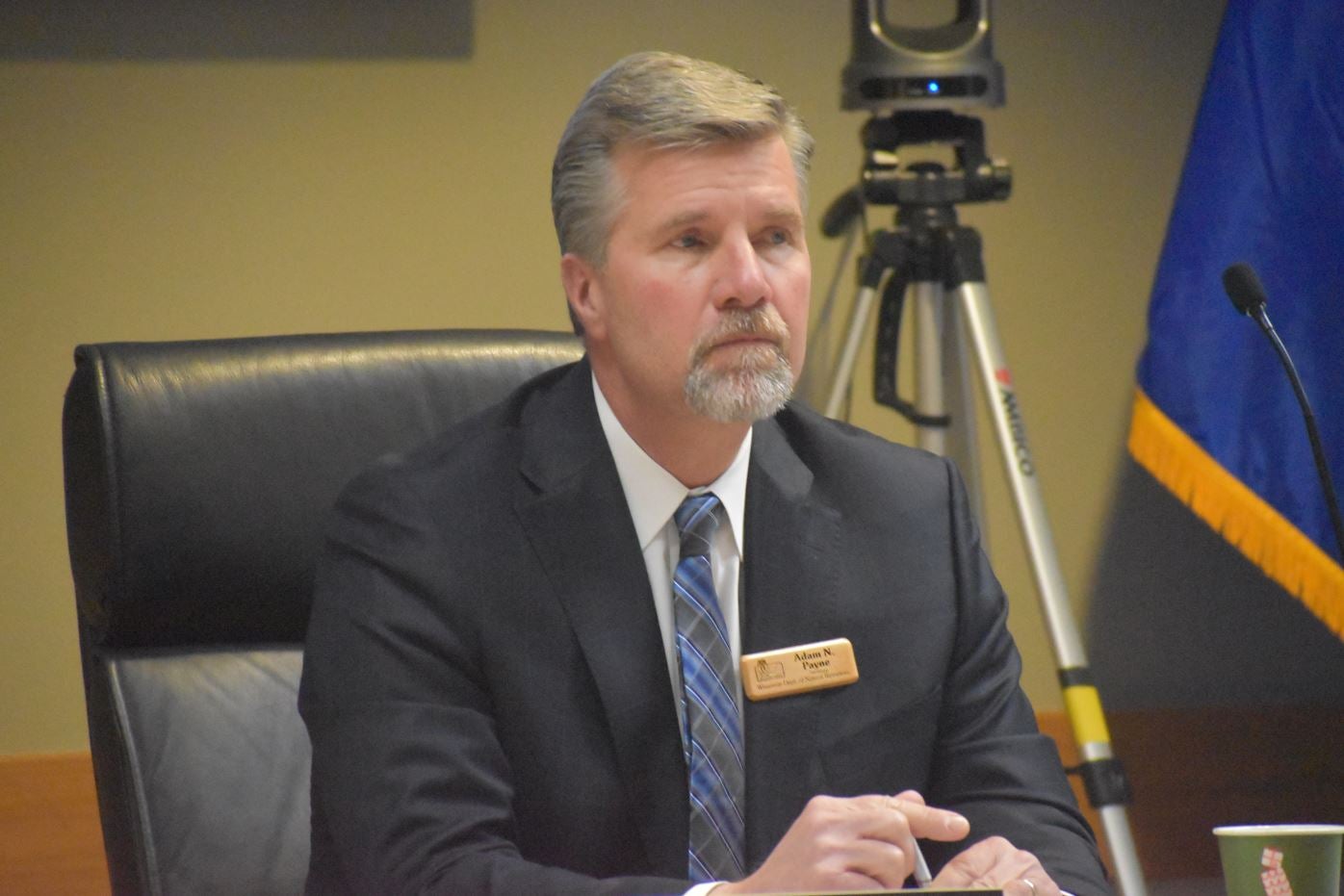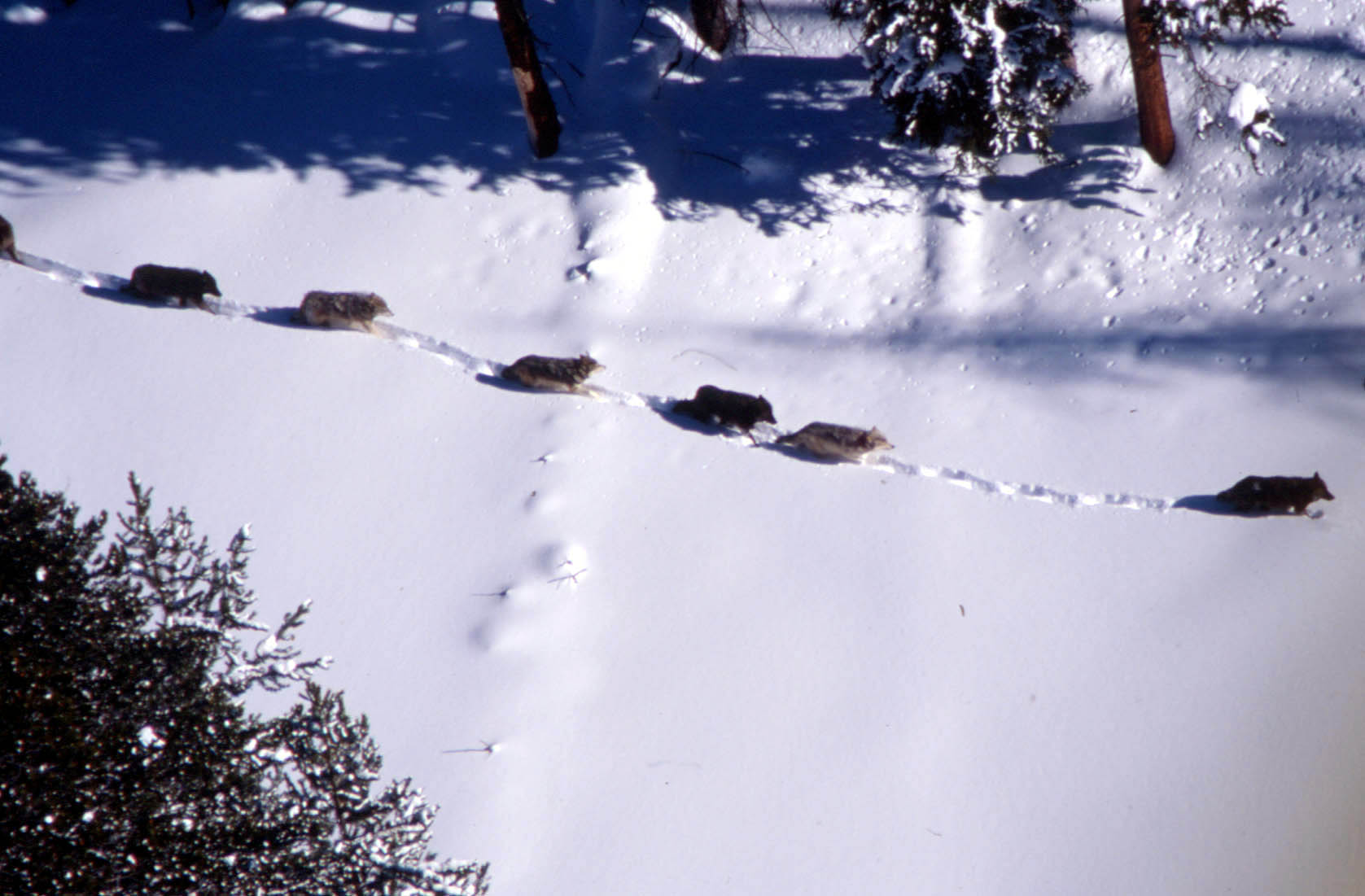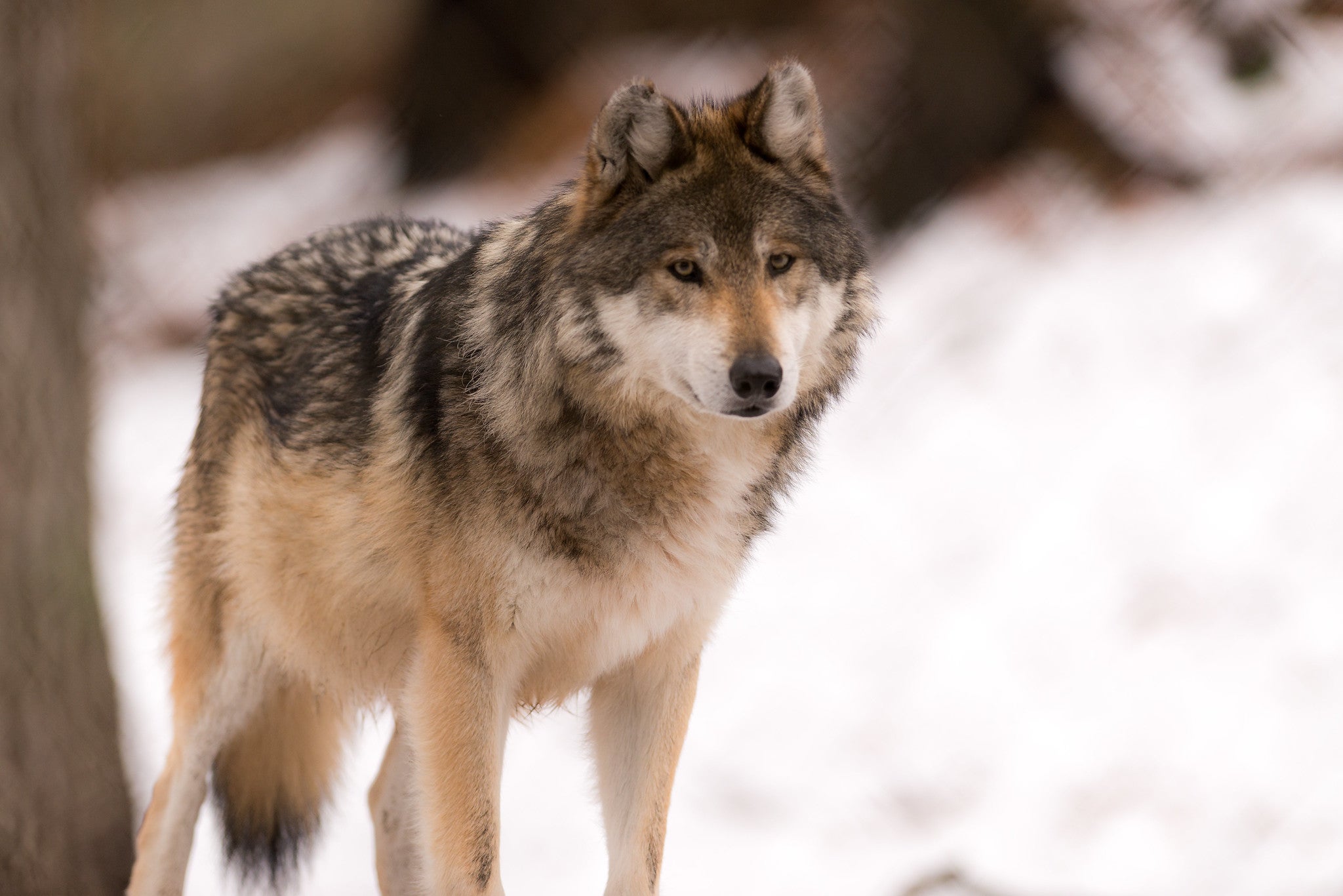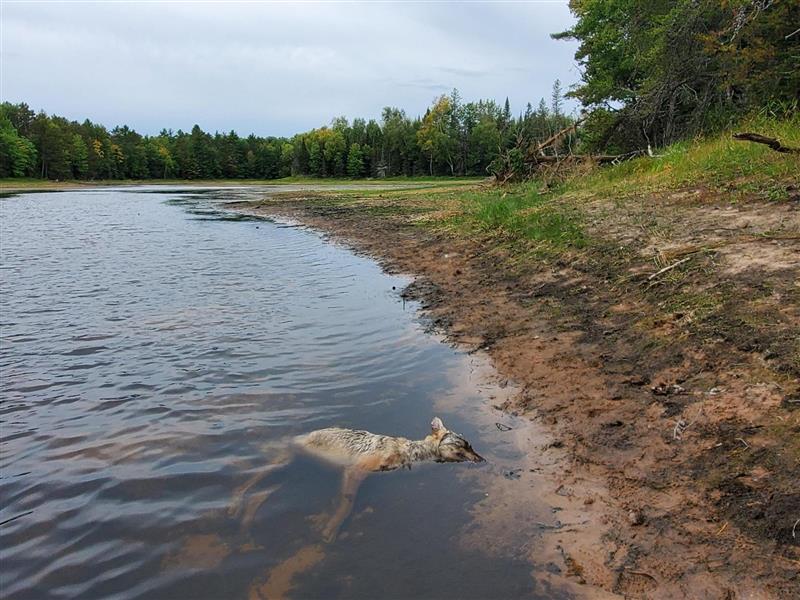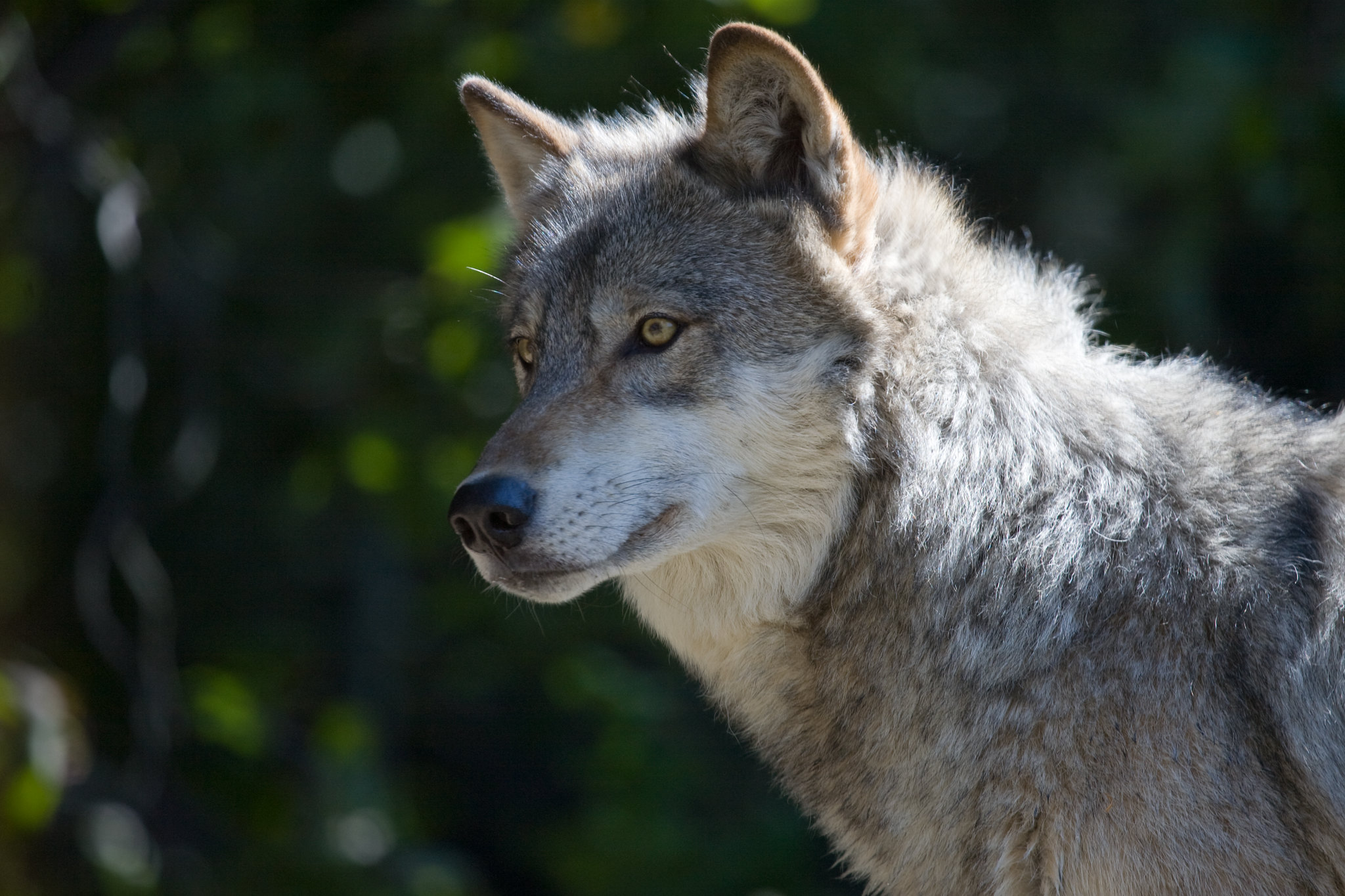The new secretary for the Wisconsin Department of Natural Resources told lawmakers Wednesday he anticipates changes to the state’s draft wolf management plan. The remarks come as Republicans are floating a bill that would set a statewide population goal for wolves under that plan.
DNR Secretary Adam Payne fielded questions from the Senate’s natural resources committee on a variety of issues, including wolf management. When asked why the plan lacks a “target number” of wolves, Payne told lawmakers he expects the agency will revisit wolf population metrics to clarify what wildlife managers think is a sustainable wolf population. He said that will be informed by biological and social science.
“Maybe we’ll see a range,” Payne said. “But we don’t do it for deer, and we don’t do it for bear.”
Stay informed on the latest news
Sign up for WPR’s email newsletter.
Payne was referring to management plans for deer and bear, saying they don’t contain specific population goals.
The DNR first released a wolf management plan more than two decades ago, and the agency issued a draft plan last fall that nixed a statewide population goal.
The last plan set a goal of 350 wolves at a time when Wisconsin had roughly 250 wolves. Since then, DNR data from September shows the animal’s population has grown four times that number to nearly 1,000 wolves.
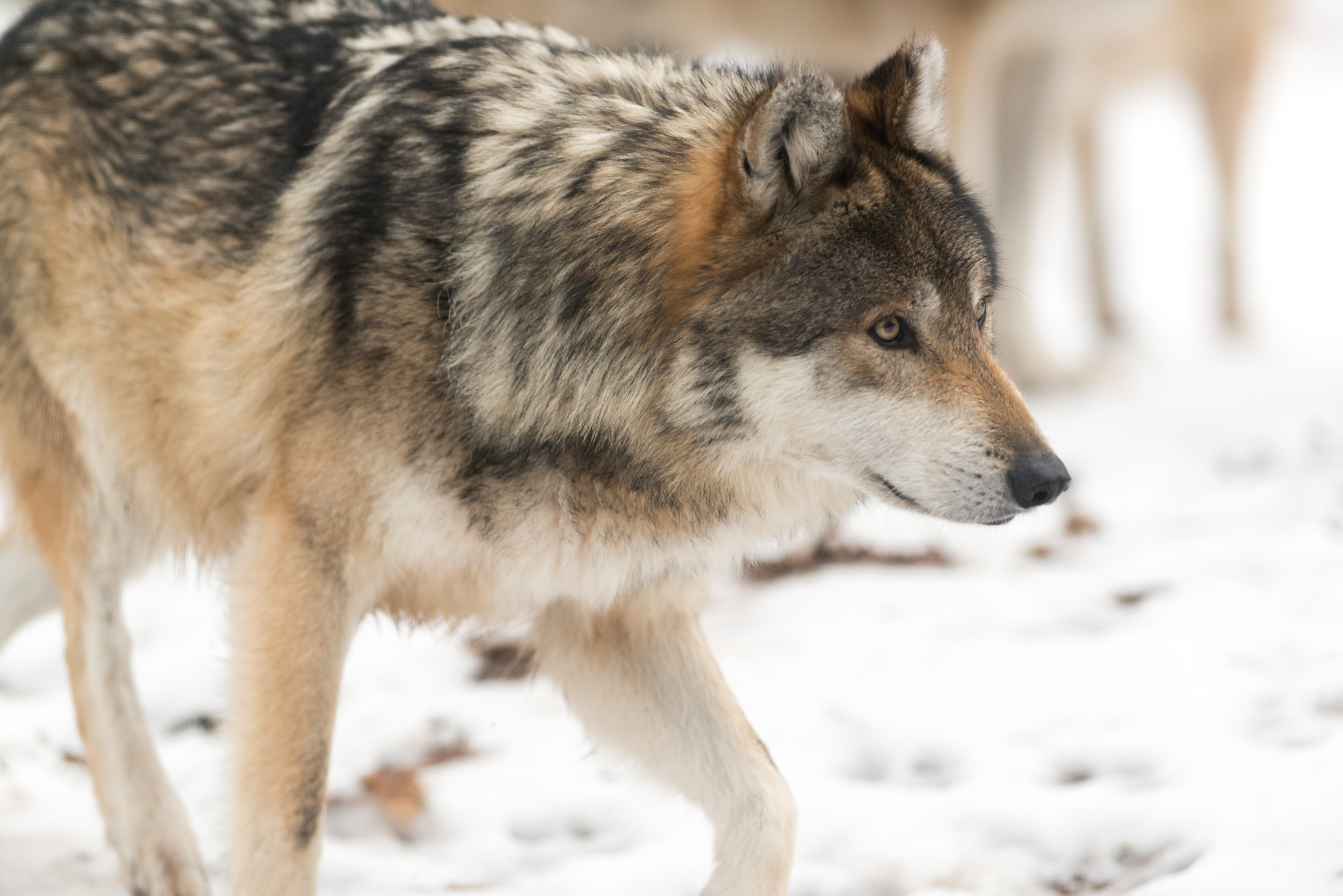
Sen. Rob Stafsholt, R-New Richmond, and Rep. Chanz Green, R-Grand View, are circulating draft legislation for co-sponsorship until Friday. Stafsholt said sportsmen and farm groups were surprised when the DNR released its new plan without a population goal.
“I think it’s pretty difficult to manage a population unless you know what direction you’re trying to manage it to,” Stafsholt said. “And a goal establishes that.”
After the Trump administration delisted wolves in 2021, Wisconsin hunters and conservative members of the Natural Resources Board pointed to the 350 goal as justification for higher wolf harvests to control the population. In 2021, state-licensed hunters killed 218 wolves in less than three days, consuming their share and Ojibwe tribes’ portion of a 200-wolf quota. A judge restored federal protections for the animal last year.
Stafsholt disagreed the legislation would be a way to expand hunting or higher quotas. He said some people have criticized him for not including a numeric goal in the draft legislation, adding the goal should be informed by the best available science.
Long-time hunter Mike Brust, legislative liaison for the Wisconsin Bowhunters Association, said there’s a place for wolves in Wisconsin. But the organization’s position is that the state’s population goal should be 350 wolves.
“I think most people that we deal with agree there needs to be some kind of number,” Brust said. “To have, basically, an unlimited number is not acceptable because wolves have spread out into areas where they don’t do well. They end up preying on pets and livestock.”
Wolf advocates argue the number of farms with livestock killed by wolves represents a tiny fraction of the state’s 64,000 farms. Melissa Smith, executive director of Friends of the Wisconsin Wolf and Wildlife, argued the goal of 350 wolves is from a vastly outdated plan that doesn’t represent the best available science. She said Republican lawmakers are circulating the bill “to reduce the wolf population” and appease a vocal minority of voters that don’t like wolves.
She pointed to a DNR public attitudes survey that found 75 percent of those surveyed had a favorable view of wolves, although those living in wolf-range held less favorable views toward the animals. The survey also found around a quarter of residents in the wolf’s range wanted fewer wolves while a third wanted to maintain the current population.
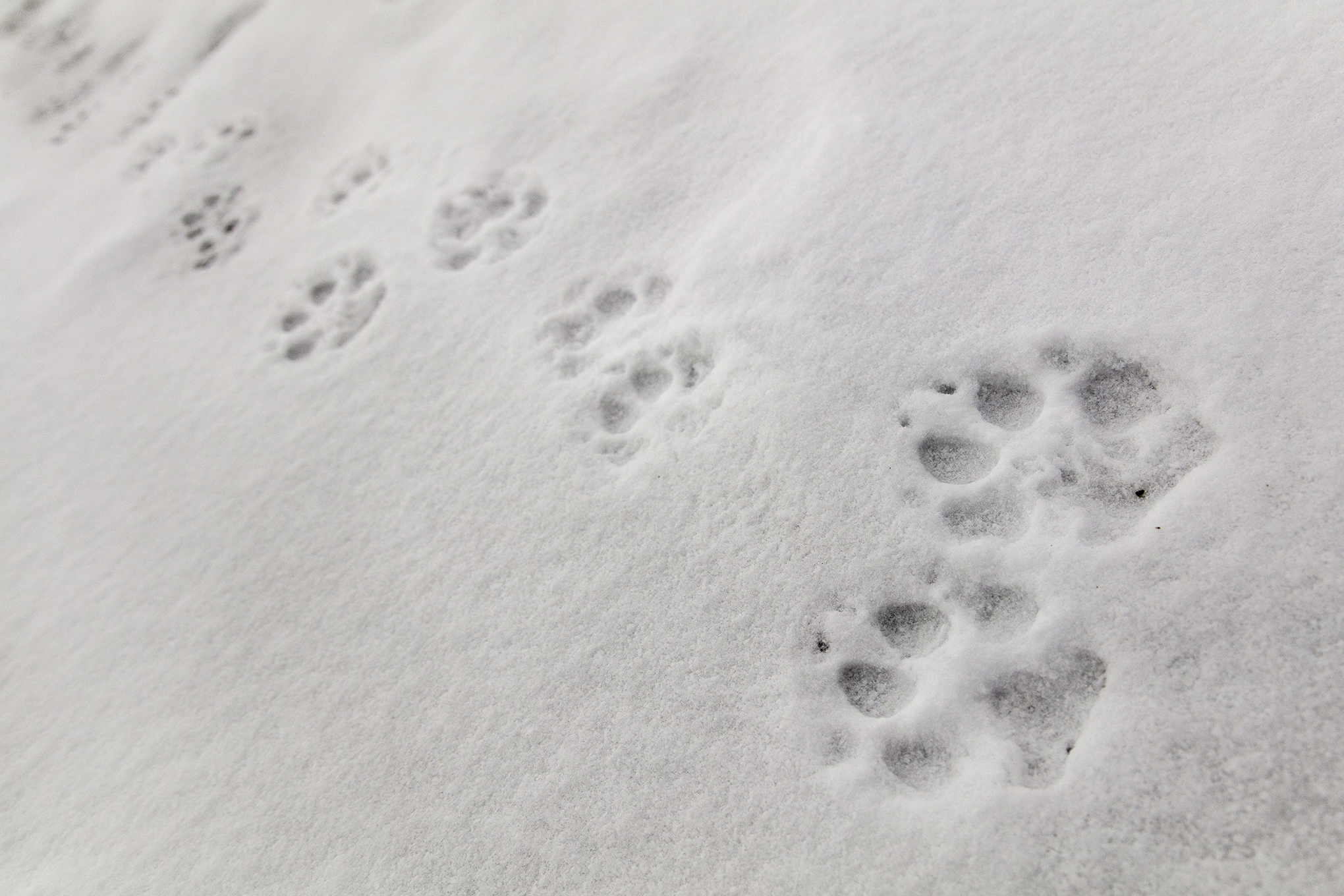
Smith said the bill fails to give everyone a voice in wolf management.
“The public will call on Gov. Evers for a veto,” Smith said. “That would be my hope.”
Sen. Stafsholt argues the lack of a population goal excludes the input of hunters and farmers whose pets and livestock have been killed by wolves.
Both Stafsholt and Green say they would like to see a goal of 350 wolves. However, Stafsholt said lawmakers wouldn’t want to see wolves hunted down to that level in one year. He said that may be a goal to work toward over two or three years.
Green said he doubts the accuracy of the DNR’s population estimate for wolves. Even so, he said the agency should be the one to establish a numeric goal.
“Our goal right now is to make sure when the time comes, we have all the rules and regulations in place,” Green said. “When the time comes and they are delisted, we can move forward with a proper wolf management plan and hopefully a successful hunt.”
Wisconsin law mandates a wolf hunt when the animal isn’t under federal protections. The DNR is still finalizing its draft wolf management plan. Payne said he hopes a final plan will go before the Natural Resources Board in late summer or fall. A spokesperson for Gov. Tony Evers didn’t respond to a request for comment on the bill.
Wisconsin Public Radio, © Copyright 2025, Board of Regents of the University of Wisconsin System and Wisconsin Educational Communications Board.
